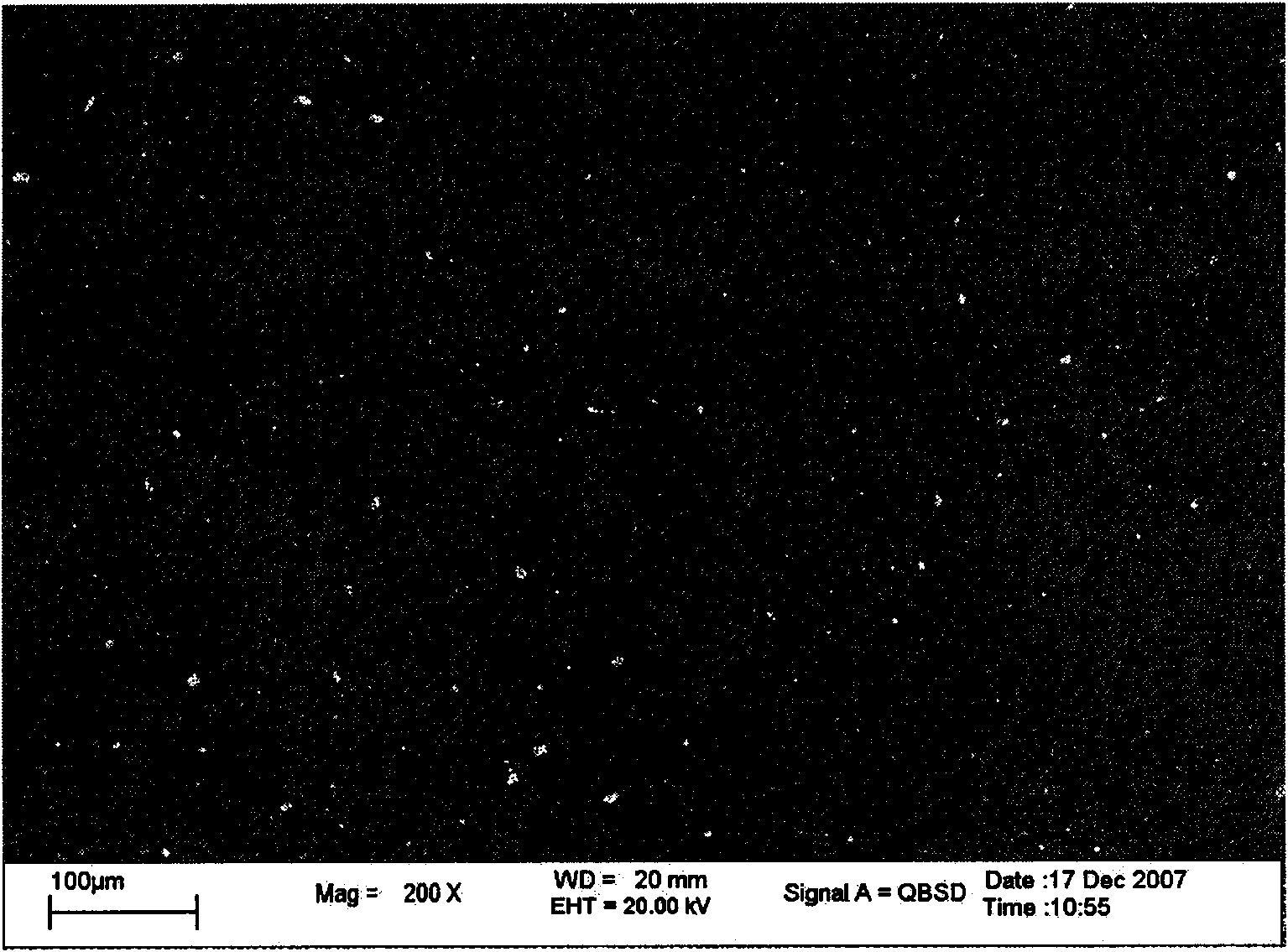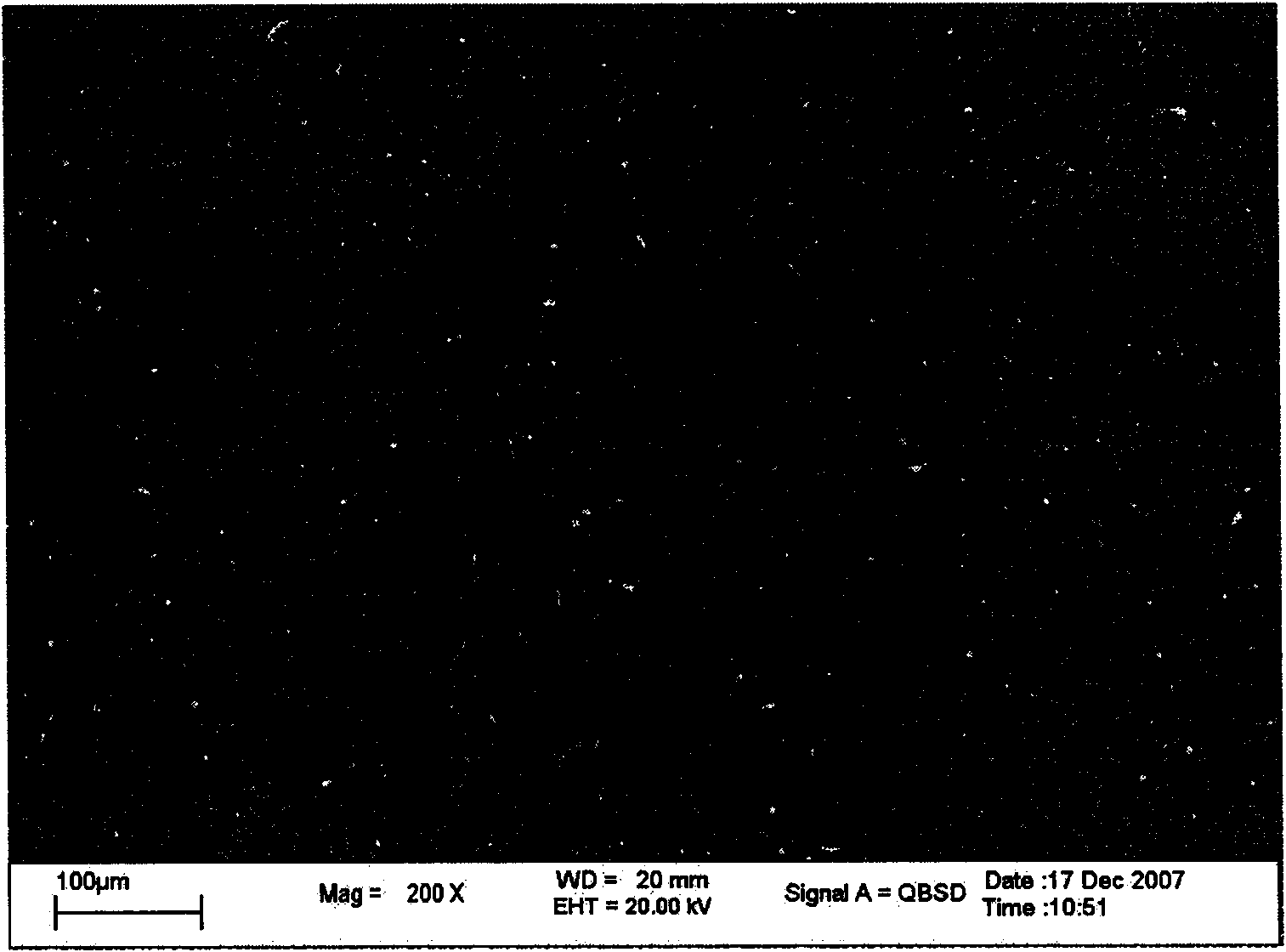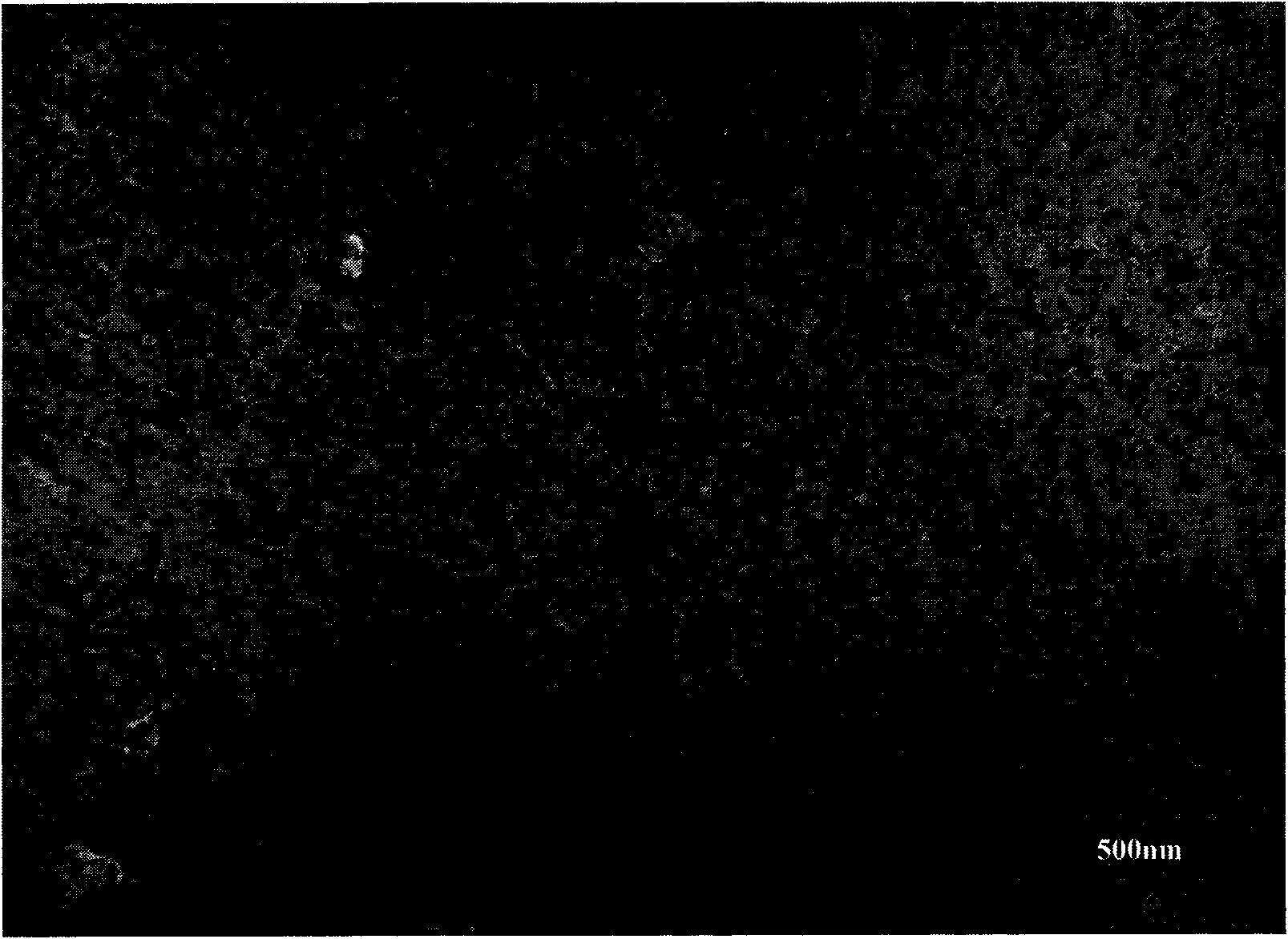Heat treatment method for improving strength and conductivity of copper alloy of Cu-Cr series
A heat treatment method and conductivity technology, applied in heat treatment equipment, heat treatment process control, manufacturing tools, etc., can solve the problems of decreased alloy strength, decreased alloy conductivity, and low alloy conductivity, and achieve high strength and fine precipitates Effect
- Summary
- Abstract
- Description
- Claims
- Application Information
AI Technical Summary
Problems solved by technology
Method used
Image
Examples
Embodiment 1
[0025] The mass percentage is Cu-0.22wt.%Cr-0.24wt.%Zr alloy, the diameter is 15mm alloy rod, the temperature is raised to 980 ℃ for 2h with the furnace, and then rapidly water quenched. The test on the primary aging process (aging temperature and holding time) shows that the strength of the alloy is the highest at 450°C for 20 hours, and the conductivity at 20 hours at 450°C is comparable to the highest conductivity at other holding times at 450°C. The first-stage aging process of secondary aging is 450°C for 15 hours, and then the alloy is taken out and cooled to room temperature in the air; the second-stage aging process is 480°C for 5 hours, and the alloy is put into heat treatment after the aging temperature reaches the set value. Furnace, the furnace temperature drops, after closing the furnace door, the temperature returns to the set value, and then the holding time is calculated, and after the aging is completed, take it out and air cool it. The micron-scale strengthen...
Embodiment 2
[0029] The mass percentage is Cu-0.37wt.%Cr-0.18wt.%Zr alloy, the diameter is 20mm sand casting alloy rod, the temperature is raised to 980 ℃ for 2.5h with the furnace, and then rapidly water quenched. The process test of primary aging shows that the strength of the alloy is the highest at 440°C for 20 hours, and the conductivity of the alloy is not lower than that of the other aging time at 440°C. The first-stage aging process of secondary aging is 430°C for 20 hours, and then the alloy is taken out and cooled to room temperature in the air; the second-stage aging process is 480°C for 6 hours, and the alloy is put into heat treatment after the aging temperature reaches the set value. Furnace, the furnace temperature drops, after closing the furnace door, the temperature returns to the set value, and then the holding time is calculated, and after the aging is completed, take it out and air cool it. The micron-scale strengthening phases in the alloy are Cr and Cu-Zr phases, and...
Embodiment 3
[0033] The mass percentage is Cu-0.8wt%Cr alloy, the diameter is 30mm sand casting alloy rod, the temperature is raised to 980 ℃ for 3 hours for solid solution treatment, and then rapid water quenching. The process test of primary aging shows that the strength of the alloy is the highest at 460°C for 17 hours, and the electrical conductivity is equivalent to the highest conductivity of the alloy at other aging times at 460°C. The first-stage aging process of secondary aging is 450°C for 15 hours, and then the alloy is taken out and cooled to room temperature in the air; the second-stage aging process is 500°C for 4 hours, and the alloy is put into heat treatment after the aging temperature reaches the set value. Furnace, the furnace temperature drops, after the furnace door is closed and the temperature returns to the set value, the holding time will start to be counted. In the low-magnification structure of the alloy after aging treatment, there are micron-scale spherical Cr ...
PUM
| Property | Measurement | Unit |
|---|---|---|
| size | aaaaa | aaaaa |
| diameter | aaaaa | aaaaa |
| diameter | aaaaa | aaaaa |
Abstract
Description
Claims
Application Information
 Login to View More
Login to View More - R&D
- Intellectual Property
- Life Sciences
- Materials
- Tech Scout
- Unparalleled Data Quality
- Higher Quality Content
- 60% Fewer Hallucinations
Browse by: Latest US Patents, China's latest patents, Technical Efficacy Thesaurus, Application Domain, Technology Topic, Popular Technical Reports.
© 2025 PatSnap. All rights reserved.Legal|Privacy policy|Modern Slavery Act Transparency Statement|Sitemap|About US| Contact US: help@patsnap.com



